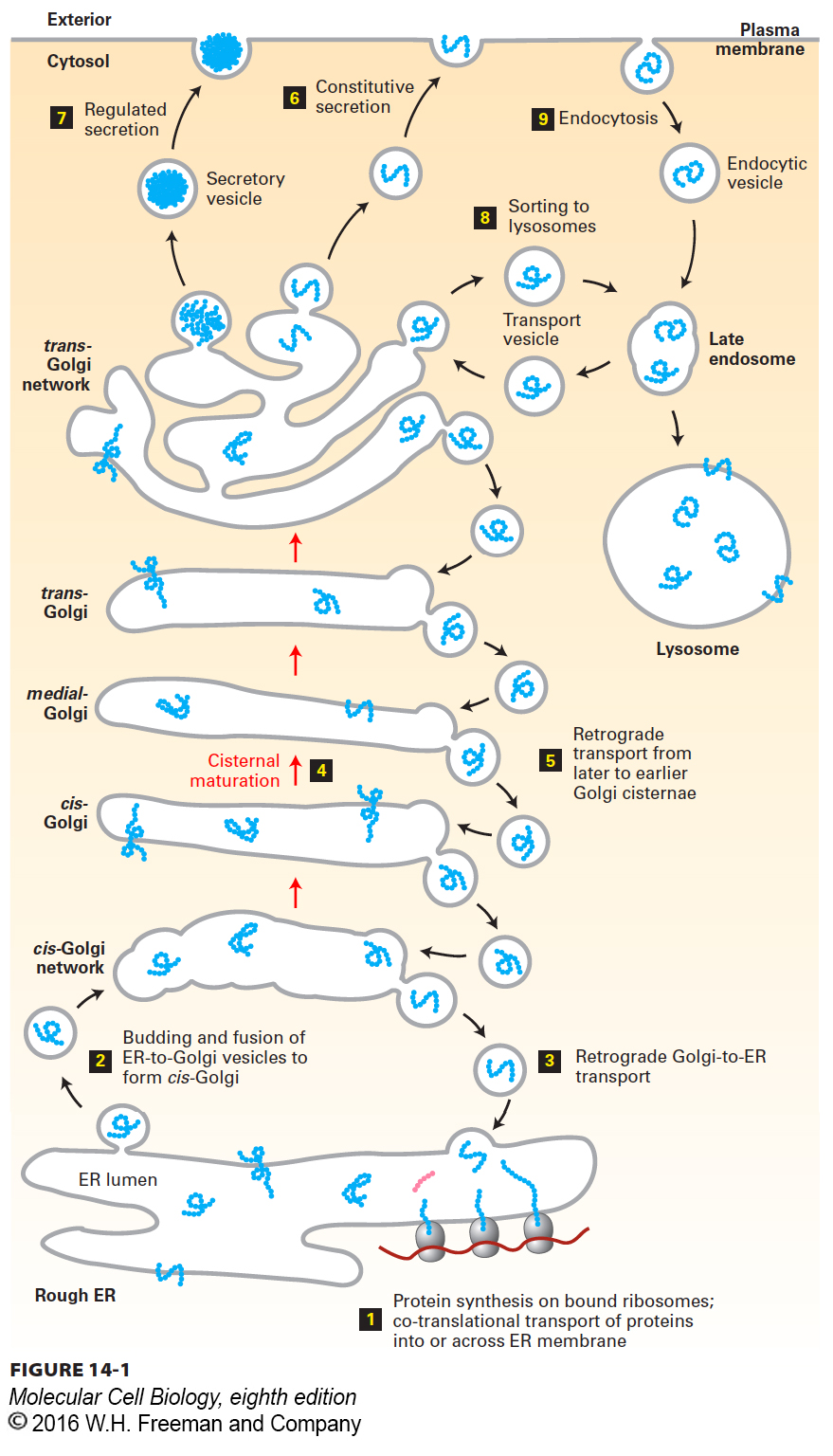
FIGURE 14- 1 Overview of the secretory and endocytic pathways of protein sorting. Secretory pathway: Synthesis of proteins bearing an ER signal sequence is completed on the rough ER 1, and the newly made polypeptide chains are inserted into the ER membrane or cross it into the ER lumen (see Chapter 13). Some proteins (e.g., ER enzymes or structural proteins) remain within the ER. The remainder are packaged into transport vesicles 2 that bud from the ER and fuse to form new cis-Golgi cisternae. Missorted ER- resident proteins and vesicle membrane proteins that need to be reused are retrieved to the ER by vesicles 3 that bud from the cis-Golgi and fuse with the ER. Each cis-Golgi cisterna, with its protein content, physically moves from the cis to the trans face of the Golgi complex 4 by a nonvesicular process called cisternal maturation. Retrograde transport vesicles 5 move Golgi- resident proteins to the proper Golgi compartments. In all cells, certain soluble proteins move to the cell surface in transport vesicles 6 and are secreted continuously (constitutive secretion). In certain cell types, some soluble proteins are stored in secretory vesicles 7 and are released only after the cell receives an appropriate neuronal or hormonal signal (regulated secretion). Lysosome- destined membrane and soluble proteins, which are transported in vesicles that bud from the trans-Golgi 8, first move to the late endosome and then to the lysosome. Endocytic pathway: Membrane and soluble extracellular proteins taken up in vesicles that bud from the plasma membrane 9 can also move to the lysosome via the endosome.
[Leave] [Close]